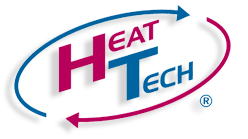Induction Motor Theory
In this installment of pumps and motors, we will discuss how the induction motor generates rotational force and what causes the current draw to increase as the load increases.
It is pretty cool, that you can supply 115 volts to the correct leads of a motor and convert that to rotational force! We've all played with magnets before - creating movement from one magnet to another object thus causing the two objects to either attract or repel each other. The rotational force in a motor is quite similar! Here is all that is required to generate motor action: a current carrying conductor in a magnetic field.
Sounds simple, and it is! However, we only connect one set of leads to the motor, and we need a current carrying conductor inside the magnetic field...the rotor (the part that moves) is not physically connected to the stator (the stationary part) in any way. So how does the current get into the rotor to satisfy the requirements for motor action?
I'm glad you asked! This is where induction comes in. The stator has a rotating magnetic field going round and round because we applied AC power to a winding with a positive polarity, and to another winding often connected to the AC line power through a capacitor. For you electrical scholars, you'll remember ELI the ICE man and know that voltage lags current in a capacitor. The magnetic field generated in the winding with the capacitor is out of phase with the winding without the capacitor. This gives us the rotating magnetic field in the stator.
That rotating field moving around the rotor generates the current through the rotor windings through generator action. To have generator action we need a conductor in a magnetic field AND relative motion between the two. At rest, our rotor is not moving and the stator's field is. The current through the rotor is generated because of the relative motion between the stator and the rotor. Now, the magnetic field in the stator and the magnetic field in the rotor are trying to lock onto each other creating rotational force. This is just like the two magnets on the table you play with. Note that the relative motion between the two fields is at the maximum difference at startup. This is why the startup inrush current is high at first, then reduces as the rotor speeds up, approaching the stator's magnetic field speed.
Note that I said "approaches". The rotor can never catch up to the stator or we would lose the relative motion and the field on the rotor would collapse. The rotor speed will be 0.5 to 5% slower than the speed of the stator field. This difference in speed is called "slip". Slip is required for an induction motor to work. As we load the rotor with more work, the percent slip increases. With more slip, there is more current draw, more heat, and more torque.
A three-phase induction motor does not require a capacitor to create a rotating field in the stator. The windings are 180 degrees apart on the same phase. This gives a + field at the top and a negative field at the bottom of the stator. Call that phase 1. Then for phase 2, those windings are 60 degrees rotationally from phase 1. In 60 more degrees, we have phase 3. As the three phases pass their electrical current, which is also 120 degrees apart, the appearance of a rotating magnetic field is created. The rotor gets it's field induced from the relative motion between the rotor and stator and we get torque in the three phase motor. Here is a diagram:
The arrow is the rotor and the different colors are phase 1, 2, and 3.
Let Heat Tech help you select your next pump. We have the experience and reputation you can trust.
Product Spotlight:
Crane Pumps & Systems is a world-class manufacturer of pumps, accessories, and services. Crane Pumps & Systems provides solutions for Municipal, Commercial, Industrial, Residential and Military market segments. Crane Pumps & Systems is a recognized leader in meeting the ever changing needs of today's worldwide marketplace.
Link to additional resources


